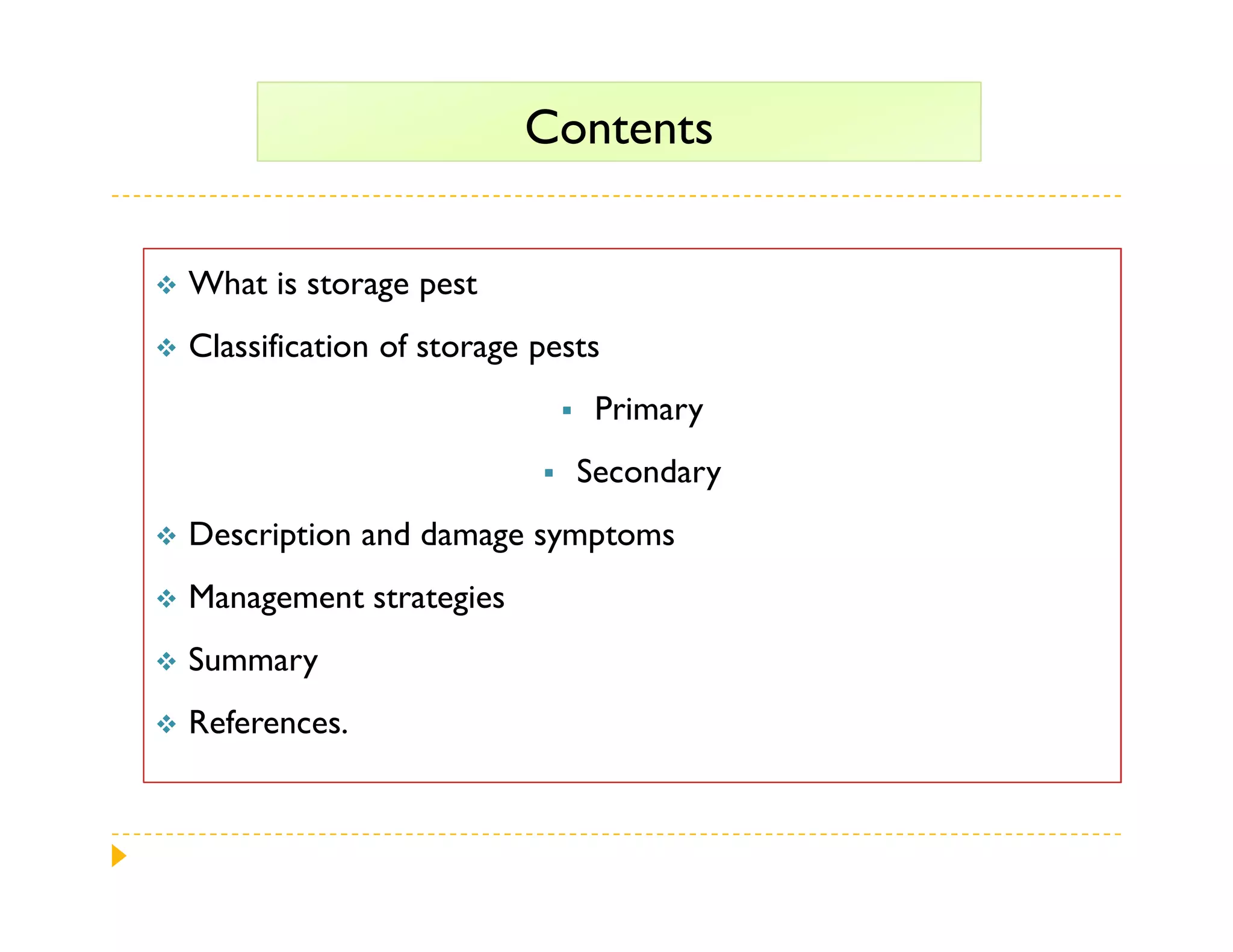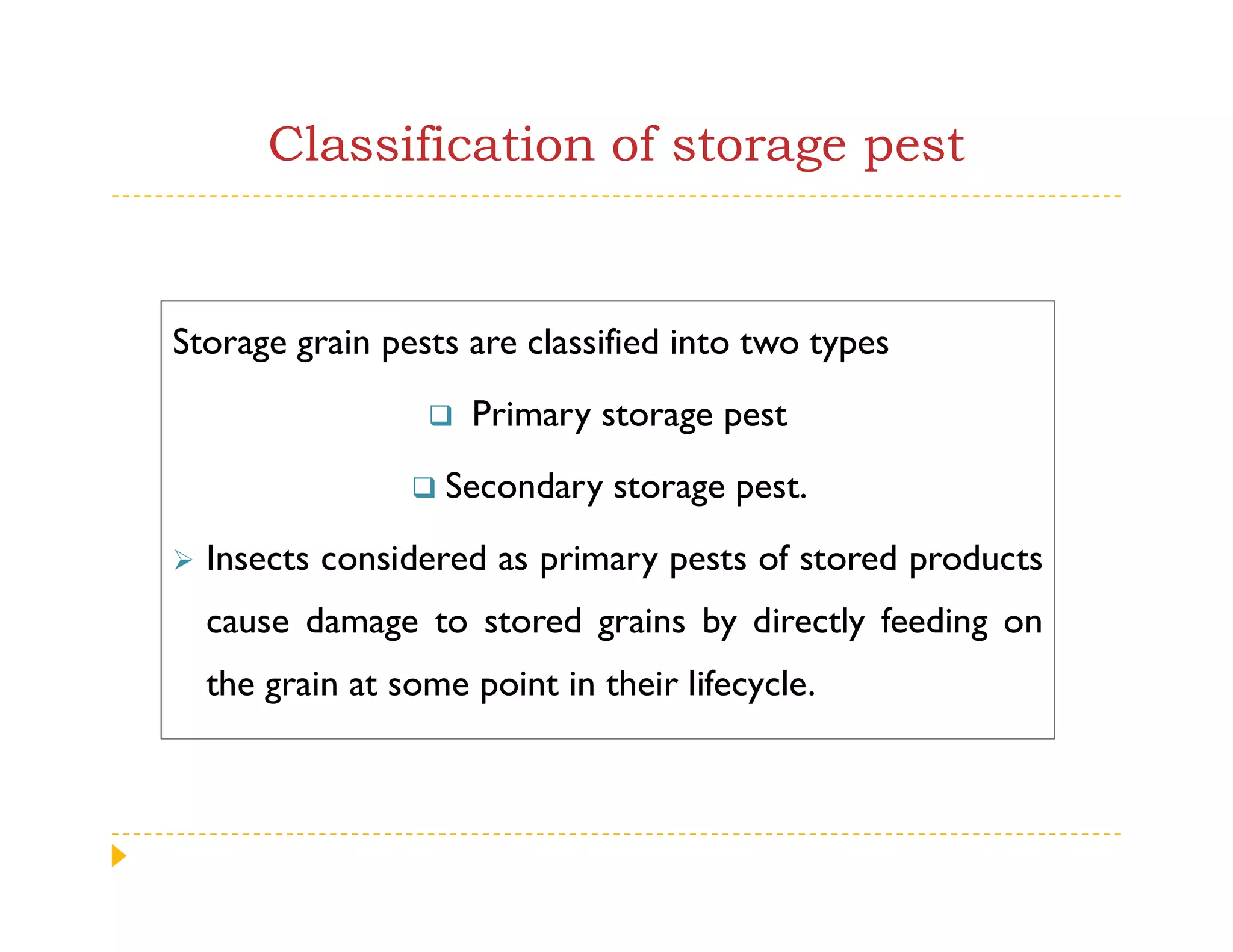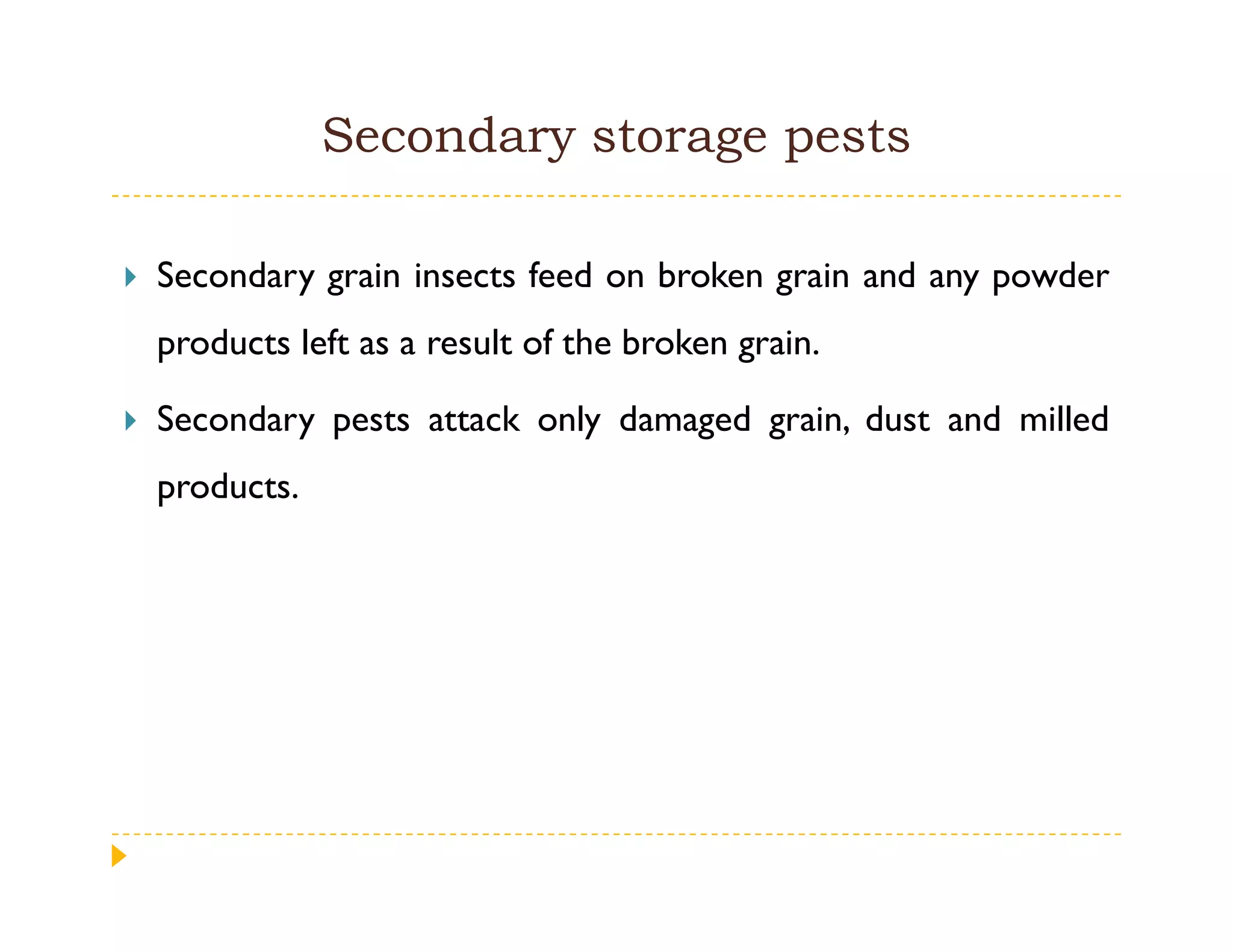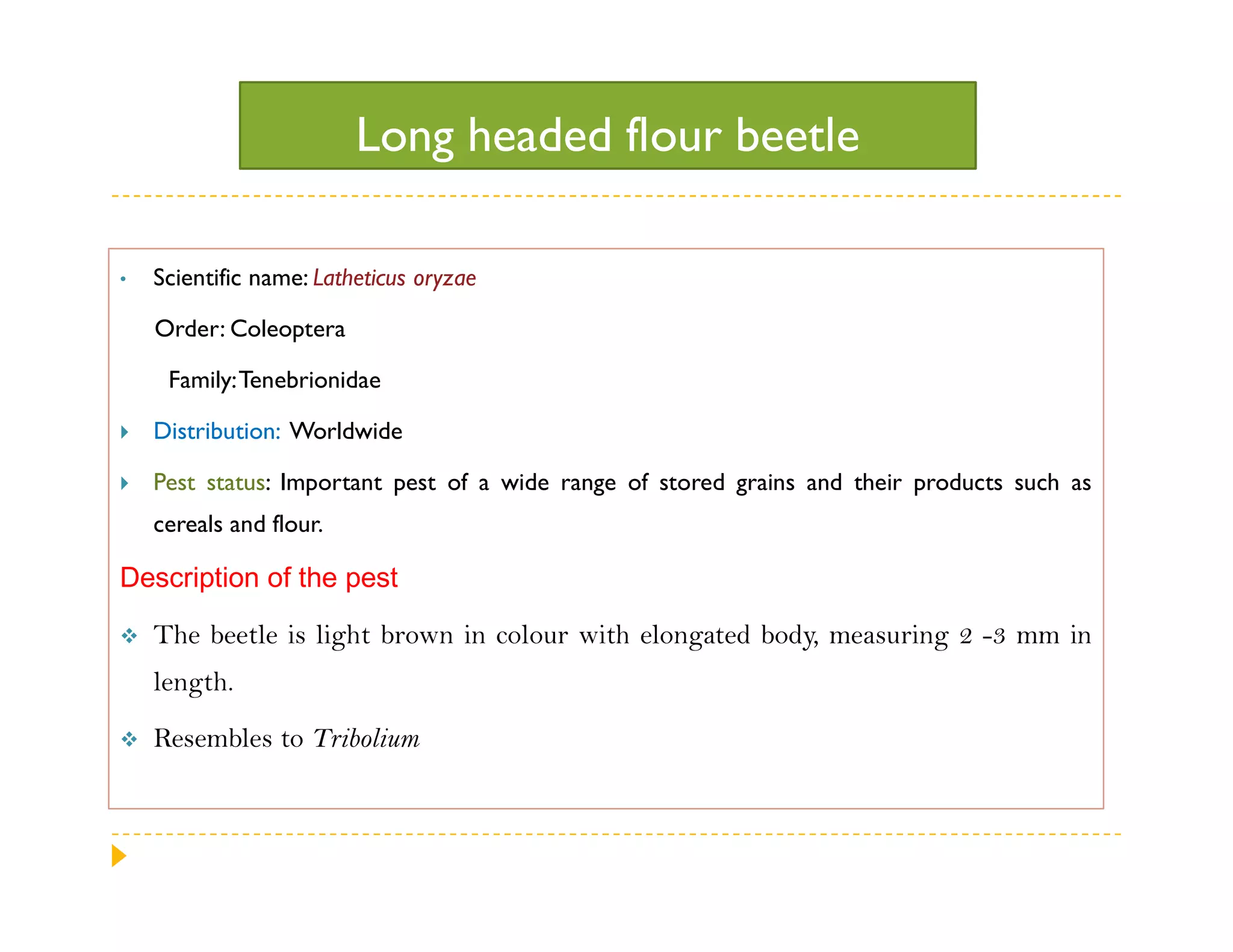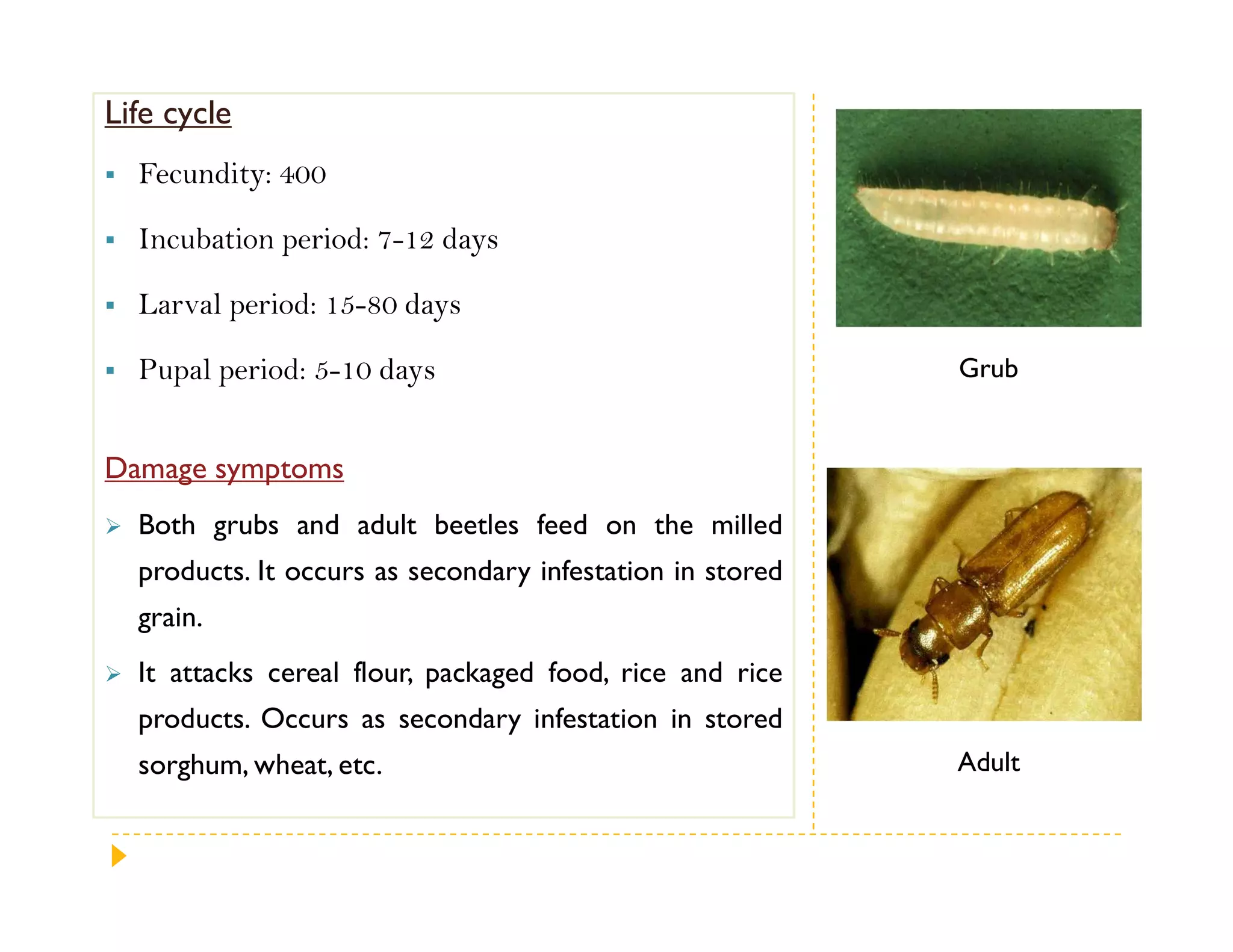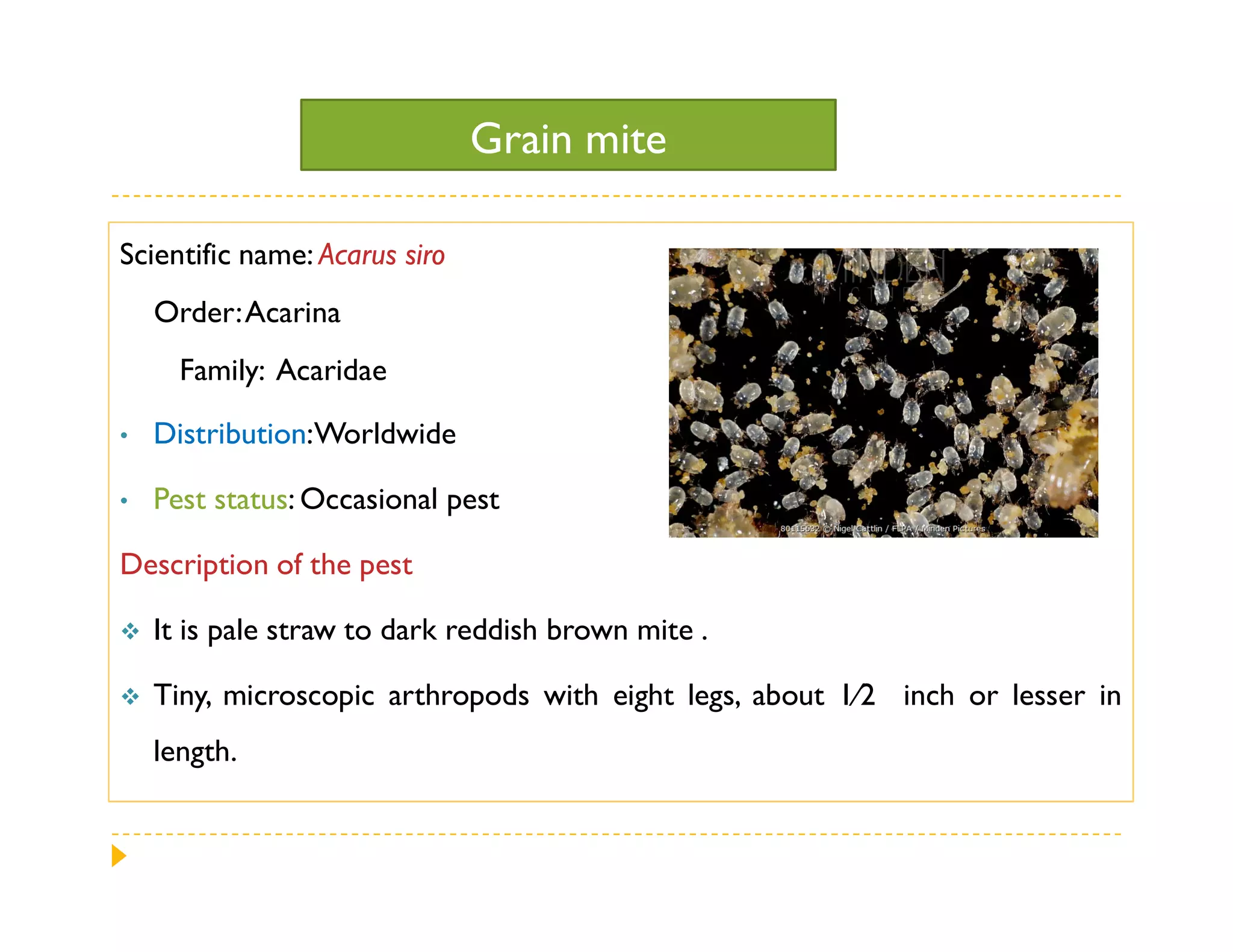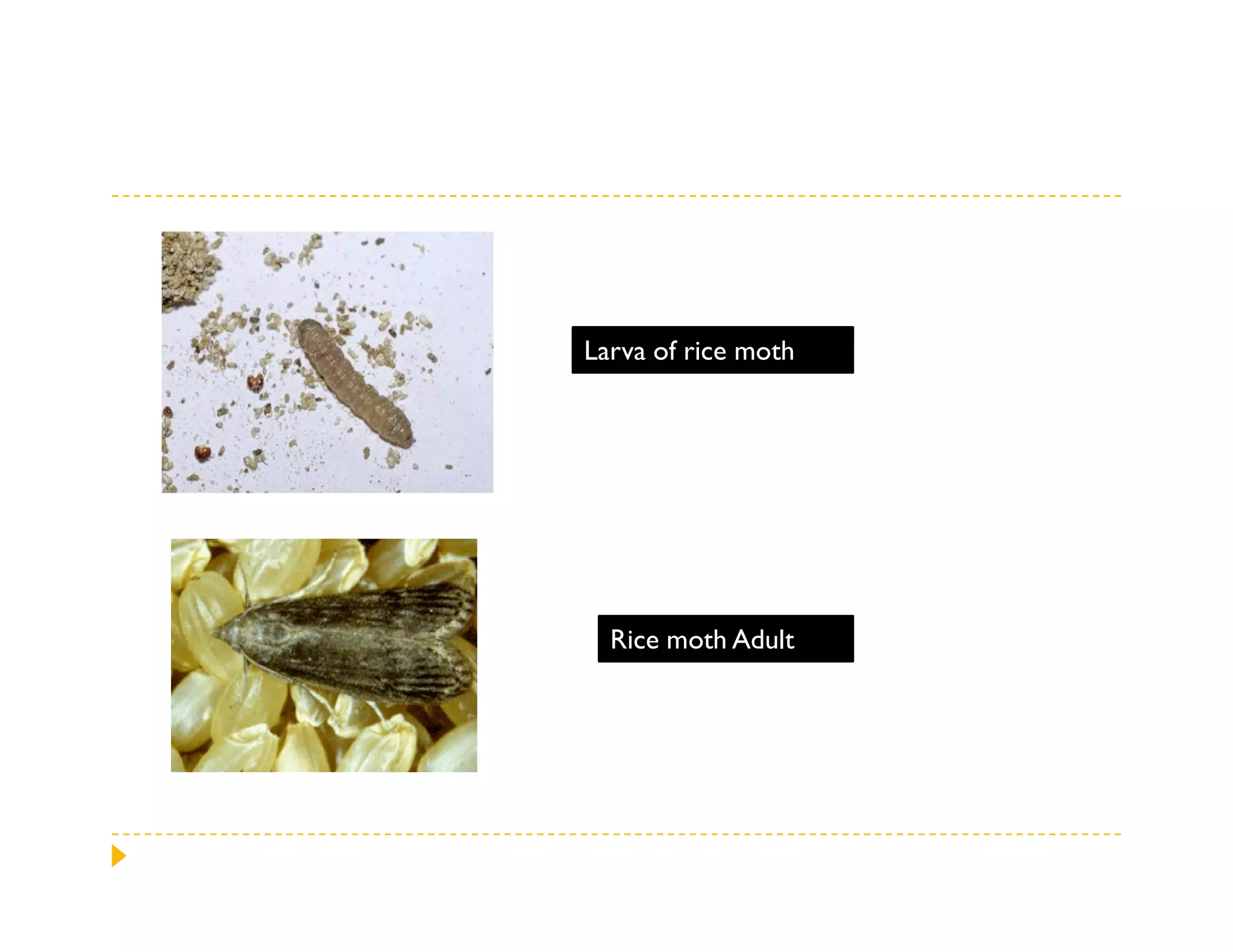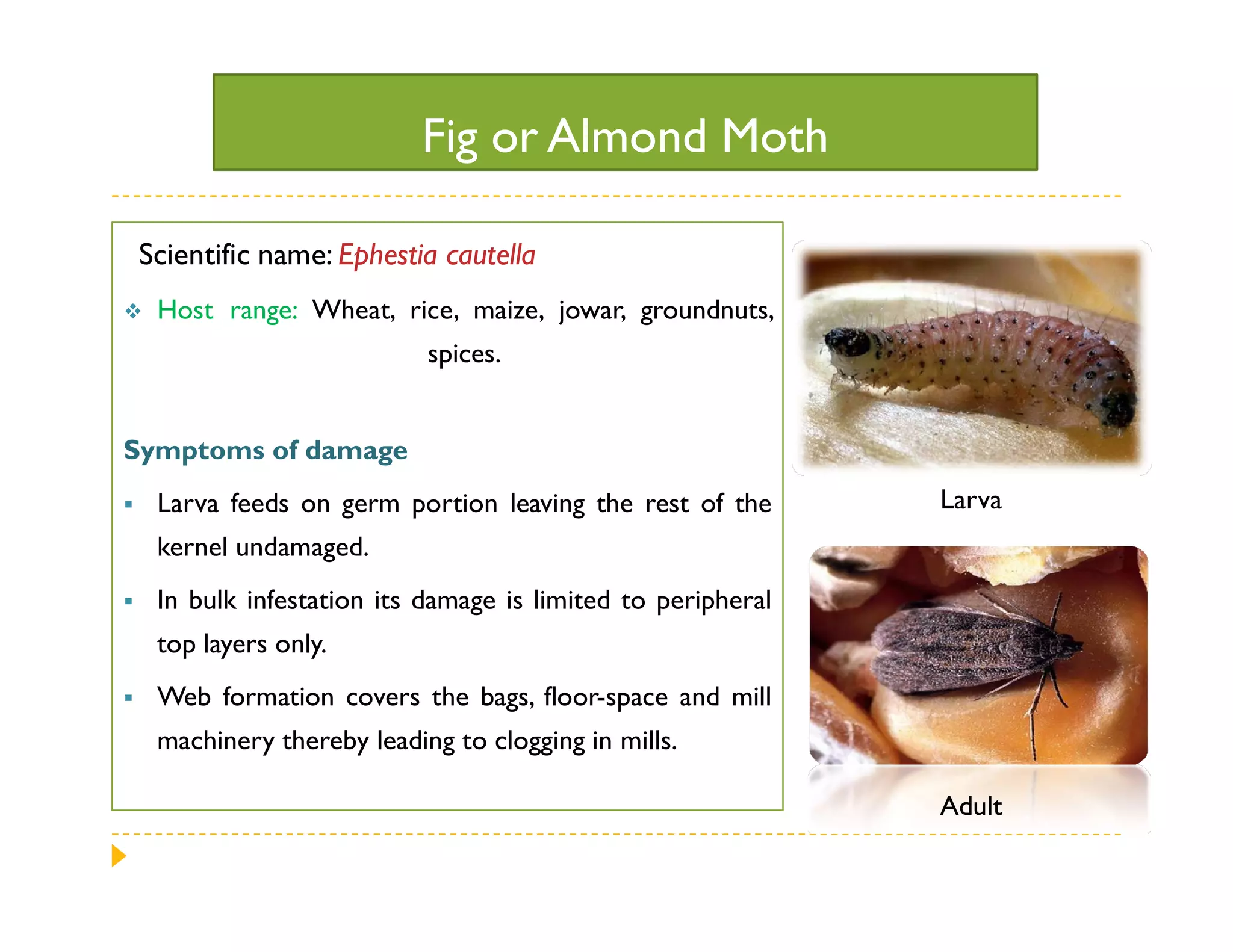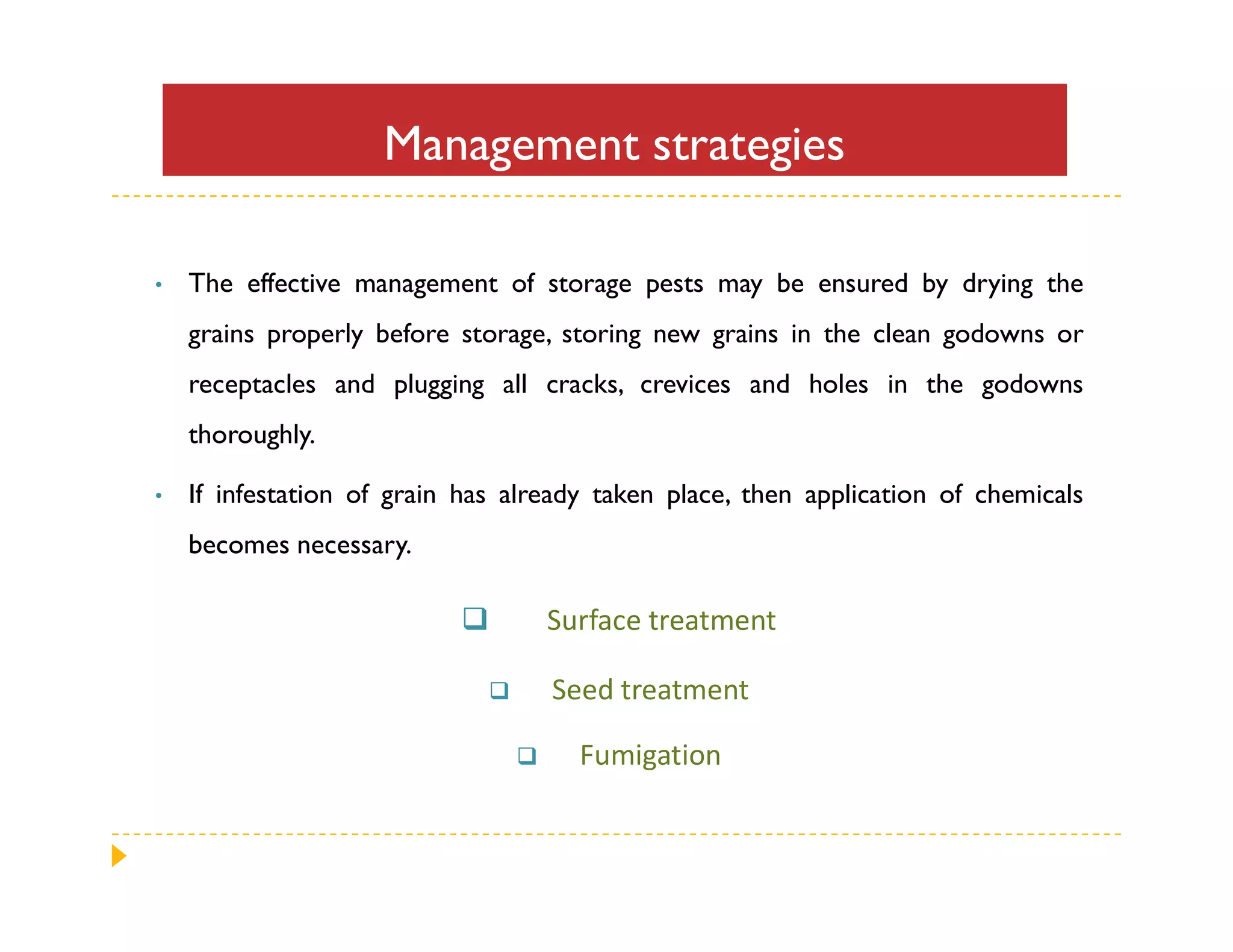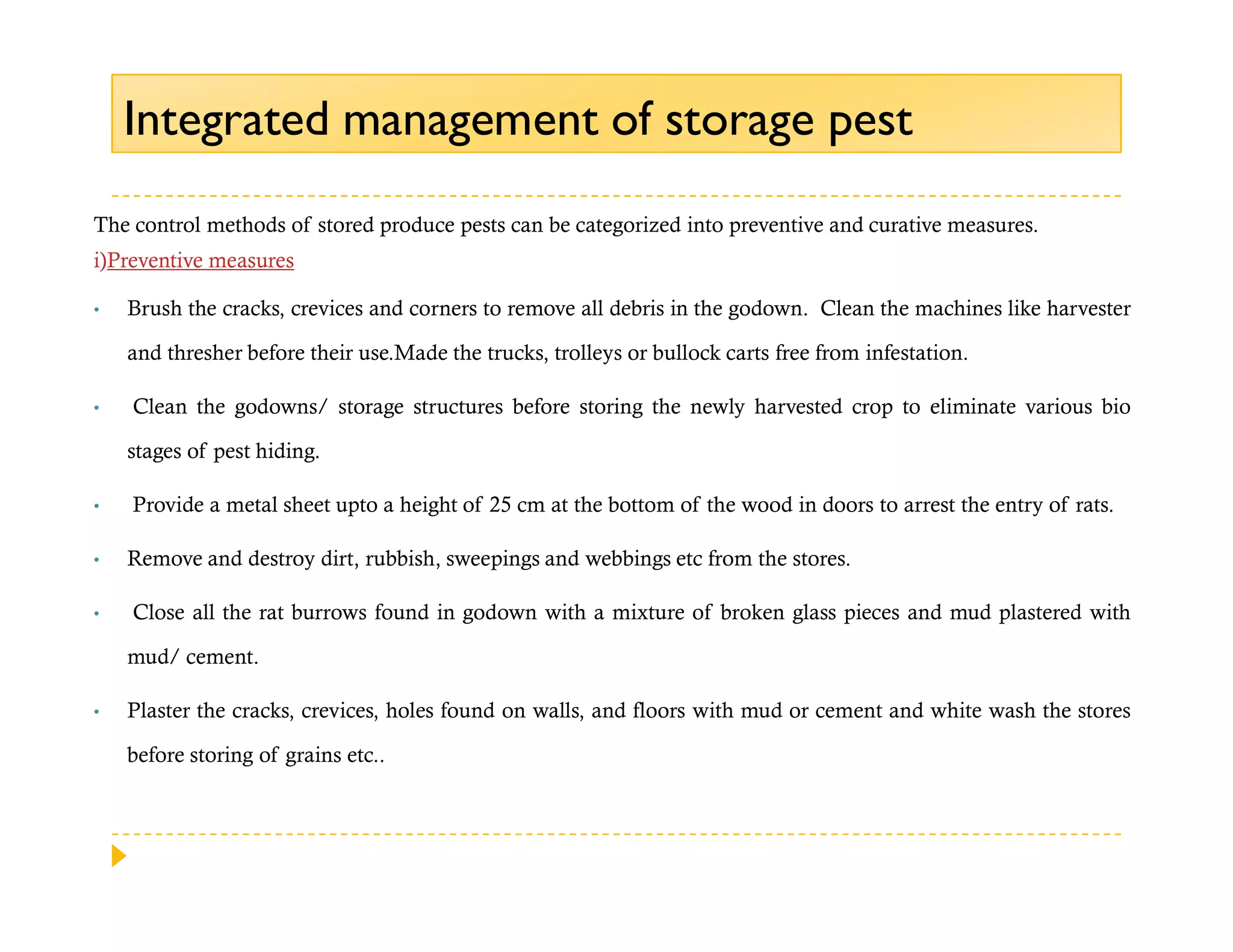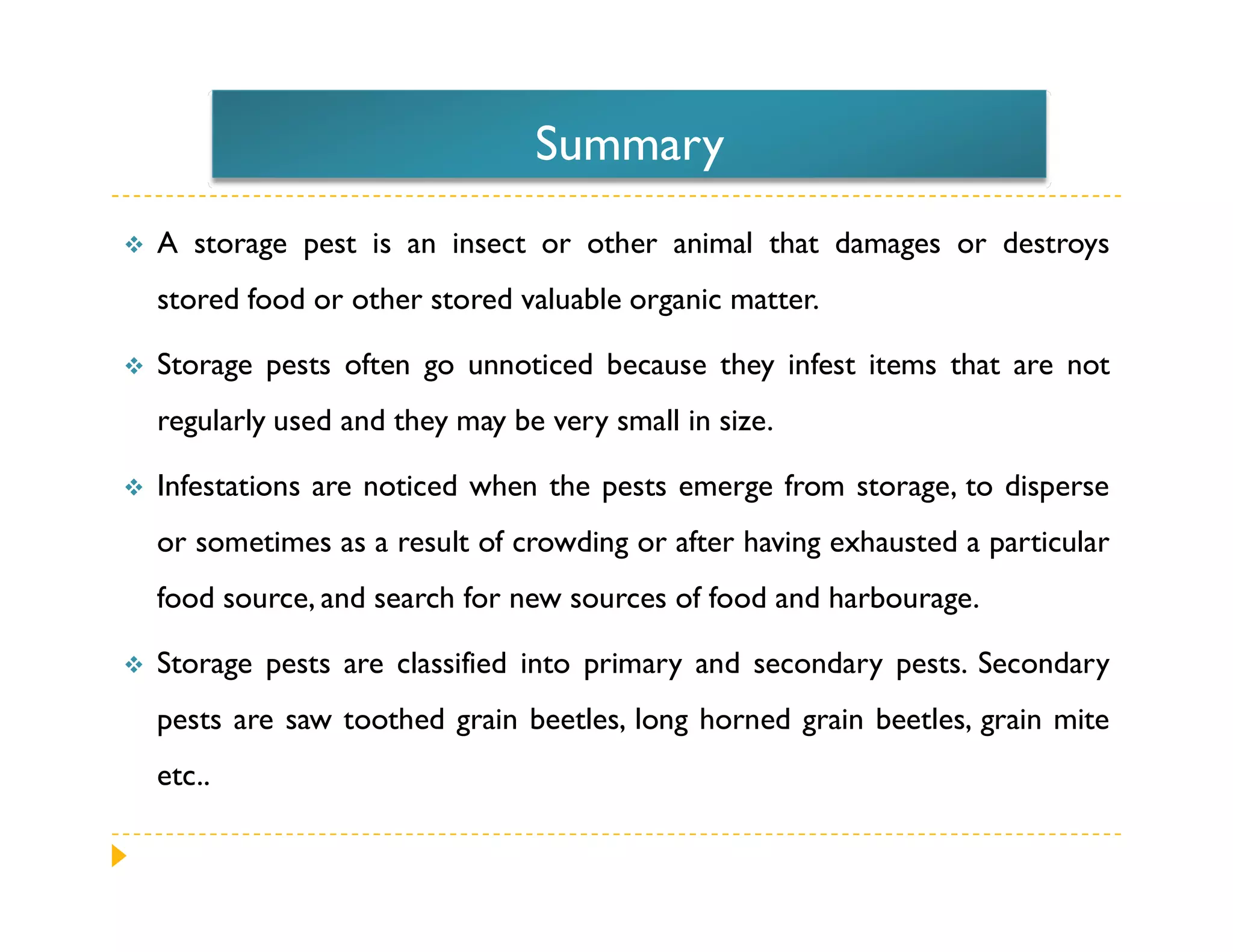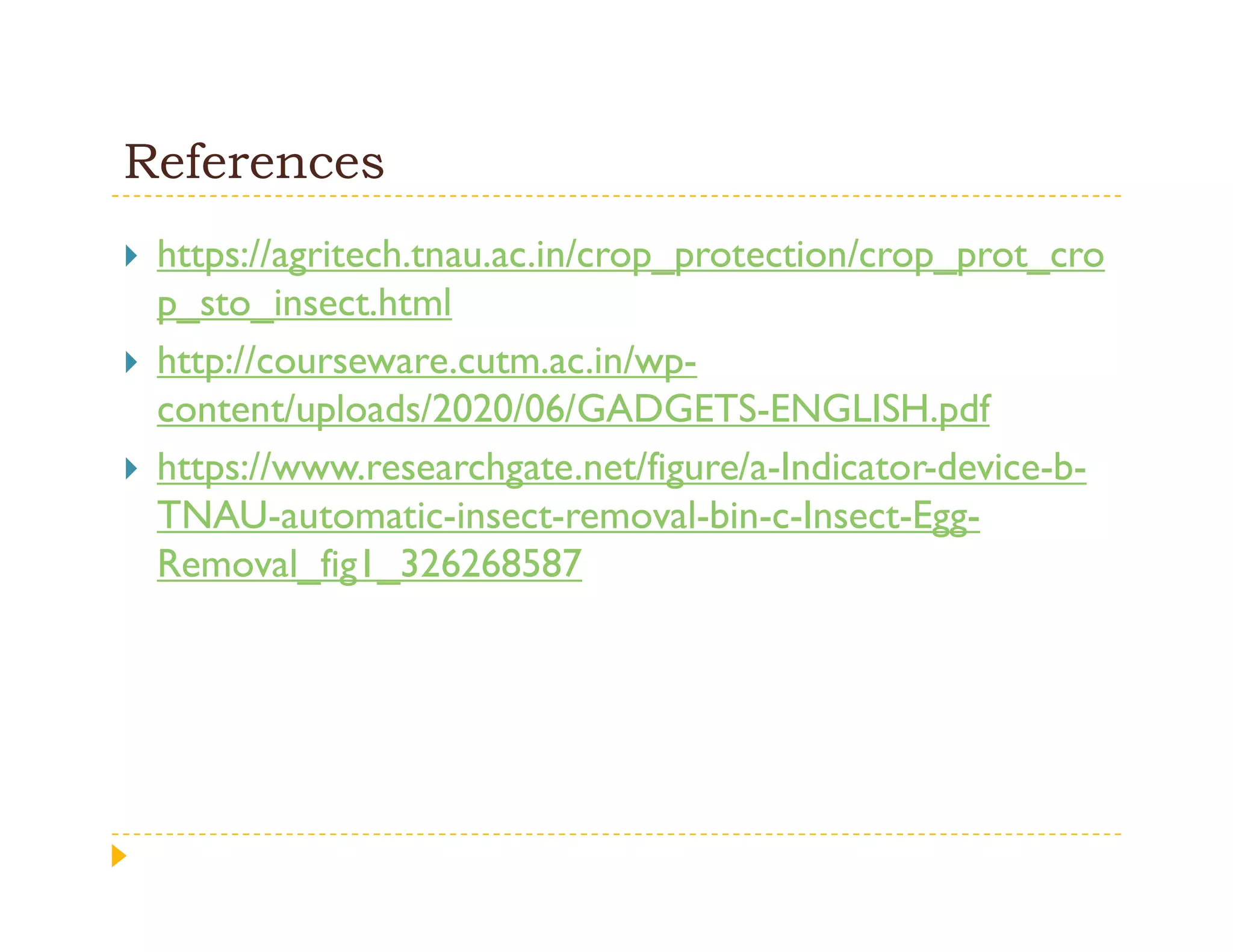This document discusses secondary storage pests. Secondary storage pests feed on broken grains, dust, and milled products left from damage caused by primary storage pests. Common secondary storage pests include the saw-toothed grain beetle, long-headed flour beetle, flat grain beetle, grain mite, rice moth, fig moth, and dermestid beetle. Management strategies for secondary storage pests include proper drying and storage of grains, chemical treatments like surface treatments and fumigation, and integrated pest management approaches using both preventative and curative control methods.

